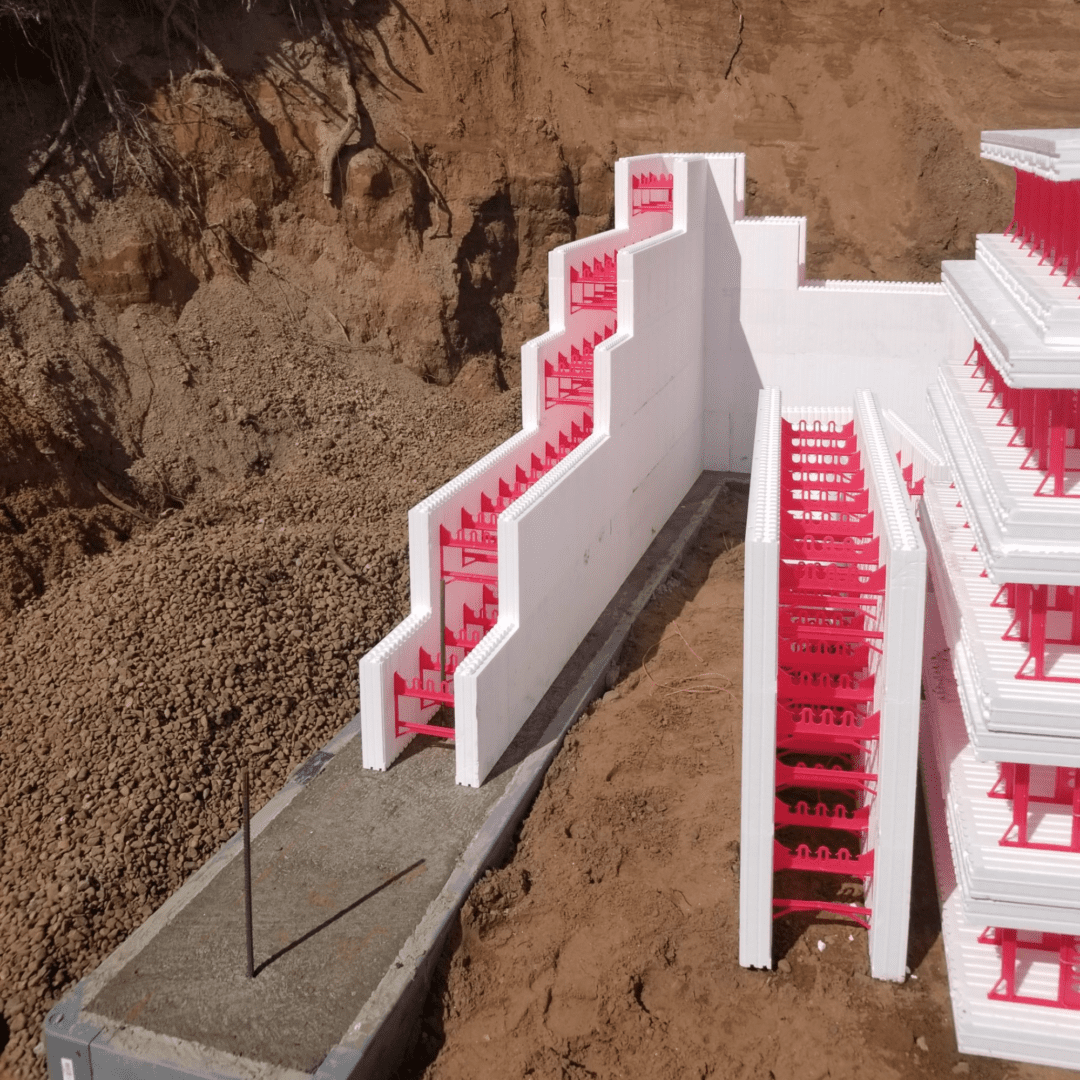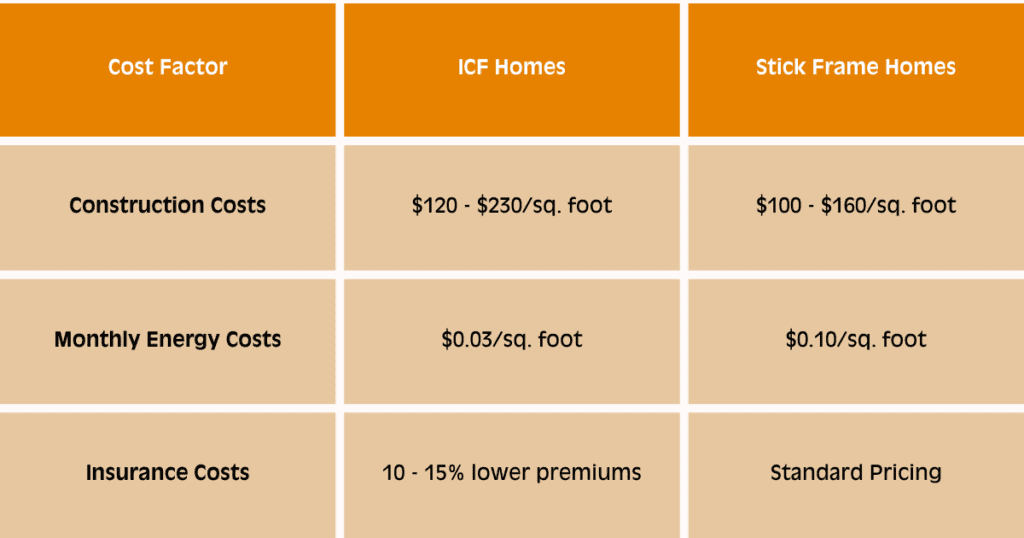
The Benefits of ICF in Residential Construction
Most people in the area remember where they were during the derecho that hit Cedar Rapids in August of 2020. A severe storm with winds in excess of 100 mph passed through the community, leaving behind a trail of destruction. Shingles were stripped, power lines were brought down and trees littered roadways and rooflines. After the storm, Casper Builders spent nearly two years almost exclusively repairing homes that were damaged by the derecho.
Also during this time, my family and I were planning to build a home just outside of Cedar Rapids and Iowa City and were evaluating what our new home should look like and what features we wanted. This also coincided with the news that insurance companies were canceling insurance policies in the area as a result of the cost of the derecho. It was at this time I became familiar with Insulated Concrete Forms (or ICFs).
What Exactly Are ICFs?
Imagine building a home with what essentially looks like giant LEGO blocks. These hollow foam blocks stack together to create the shape of your walls. Steel reinforcement is added inside, and then concrete is poured into the hollow centers. The foam blocks stay in place permanently, providing insulation on both sides of a solid concrete core.

When you run your hand along a finished ICF wall, you’d never know what’s behind the drywall or exterior finishing. It looks like any other home, but hidden within those walls is a fortress of strength that traditional wood-frame houses simply can’t match.
The foam used in these blocks is typically expanded polystyrene (EPS) – similar to what you might find in packaging, but engineered specifically for construction. Some manufacturers use polyurethane foam for even better insulation, while others create blocks from cement-bonded wood fiber for added fire resistance.
Standing Strong When Nature Strikes
What impressed me most about ICF homes is their resilience. ICF walls offer five to ten times the strength of traditional wood framing. Think about that for a moment – your home could be ten times stronger against the forces that typically destroy houses during disasters.
The Federal Emergency Management Agency (FEMA) actively recommends ICF construction for areas prone to tornadoes and hurricanes. In a world where climate change is increasing both the frequency and intensity of extreme weather, having a home that can withstand these events isn’t just a luxury – it’s becoming a necessity.
The Comfort of Energy Efficiency
Beyond safety, what I find most remarkable about ICF homes is how comfortable they are to live in. The continuous layer of insulation on both sides of the concrete creates what energy experts call a “thermal envelope.”
To understand why this matters, think about your home during temperature extremes. In a traditional house, you might notice certain rooms getting too hot in summer or too cold in winter, despite your HVAC system working overtime. This happens because “thermal bridging” – where heat transfers through the wood studs – creates weak points in your insulation.
ICF walls eliminate this problem entirely. The foam is continuous, creating consistent insulation throughout the entire structure. The technical measurement for this is called R-value, with higher numbers indicating better insulation properties.
While a typical wood-frame wall offers R-13 to R-19 insulation, ICF walls deliver R-22 to R-30 – nearly double the protection against heat transfer. What does this mean in practical terms? Most ICF homeowners report 20-25% lower energy bills and noticeably more consistent indoor temperatures year-round.
Making Financial Sense
Let’s talk about costs – the question everyone asks first. Yes, building with ICF typically adds about 3-5% to the initial construction budget of a home. For a $300,000 house, that’s an additional $9,000 to $15,000.
But viewing this only as an upfront cost misses the bigger financial picture. Consider these offsetting factors:
- Your monthly energy bills drop significantly from day one. Those savings continue for the entire life of the home.
- Insurance companies recognize the safety advantages, often offering lower premiums for ICF homes due to their resistance to fire, wind, and flooding.
- The concrete core doesn’t rot, warp, or become food for termites, drastically reducing maintenance costs over decades of ownership.
When I run the numbers for most homeowners, the break-even point comes much sooner than they expect – often within 7-10 years. After that, the savings continue for the life of the home, which can easily exceed 100 years for ICF construction.

Living With Peace and Quiet
One benefit I didn’t anticipate until I visited an ICF home was the incredible sound insulation.
The sound-dampening quality is measured using “Sound Transmission Class” (STC) ratings. A typical wood-frame wall has an STC of 35-45, meaning you can still hear conversations and traffic noise from outside. ICF walls achieve STC ratings of 48-58, which means even loud outdoor sounds become barely perceptible. For anyone living near airports, highways, or in urban environments, this feature alone can dramatically improve quality of life.
Beyond the Myths
Despite these advantages, misconceptions about ICF construction persist. Let me address the three I hear most often:
“ICF homes look like concrete bunkers.” Nothing could be further from the truth. Since the ICF is just the structural component, you can finish your home with any exterior you desire – brick, stone, stucco, vinyl siding, or wood. From the street, an ICF home looks identical to any other home in the neighborhood.
“ICF is only for luxury homes.” While early adoption was strongest in the high-end market, ICF construction has become mainstream and is now used in homes across all price points. As production has scaled up, costs have come down.
“The construction process is too complicated.” Modern ICF systems are designed with simplicity in mind. Many contractors who initially hesitated to work with ICFs find the learning curve surprisingly manageable, and specialized training programs have made implementation more straightforward than ever.
Building for a Changing World
As I’ve researched and experienced ICF construction, I’ve become convinced that it represents not just an alternative building method, but a necessary evolution in how we think about our homes.
The increasing frequency of extreme weather events, rising energy costs, and growing environmental awareness all point toward the need for more resilient, efficient housing. ICF construction addresses these challenges while creating homes that are more comfortable, quieter, and healthier to live in.
For my family, the decision to build our next home using ICF technology isn’t just about creating a stronger structure – it’s about peace of mind. It’s knowing that we’re building something that will protect our loved ones, reduce our environmental footprint, and potentially stand for generations.
In a world of increasing uncertainty, there’s something profoundly reassuring about building on a foundation of strength. ICF homes don’t just weather storms – they stand as testimony to our capacity to build better, smarter, and more sustainably for the future. Contact Casper Builders to discuss your ICF project today.
Fox Blocks. (2024). ICF R-Value & Energy Savings. Retrieved from https://www.foxblocks.com/blog/icf-r-value
HomeGuide. (n.d.). ICF concrete house cost. https://homeguide.com/costs/icf-concrete-house-cost
ICFA. (2024). What is ICF?. Retrieved from https://icfa.org.uk/what-is-icf/
National Weather Service. (2020). 2020 Derecho Anniversary. Retrieved from https://www.weather.gov/ind/2020derechoanniv
SuperForm. (n.d.). Insulated Concrete Forms (ICFs) for residential & commercial construction. https://www.superformicf.com/
U.S. Department of Housing and Urban Development (HUD). (2001). Costs and Benefits of Insulating Concrete Forms for Residential Construction. https://www.huduser.gov/publications/pdf/icfbenefit.pdf
